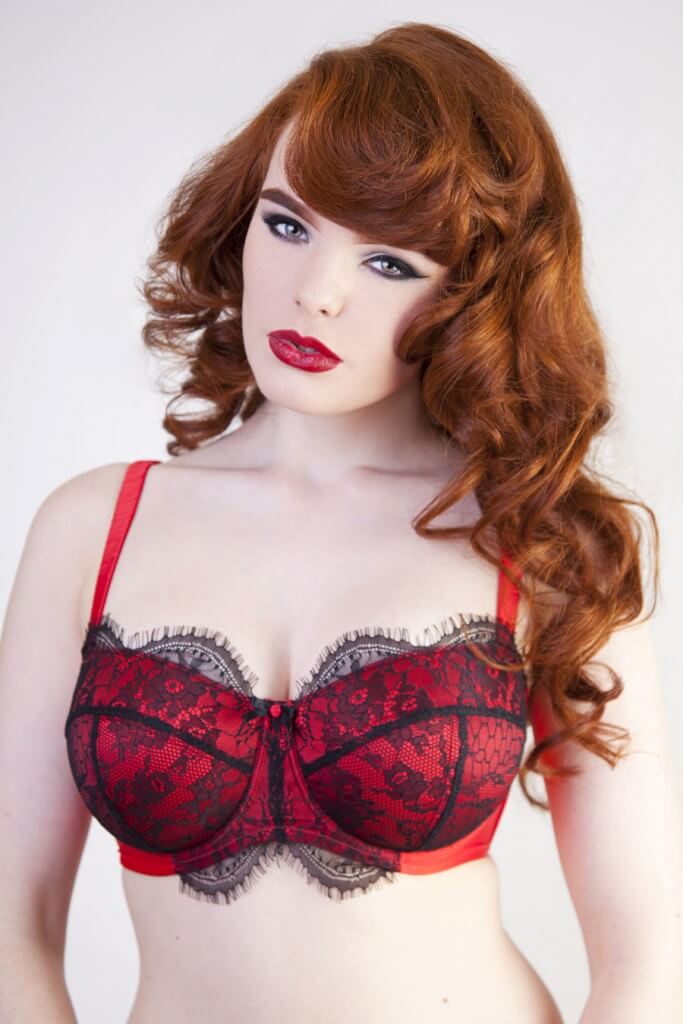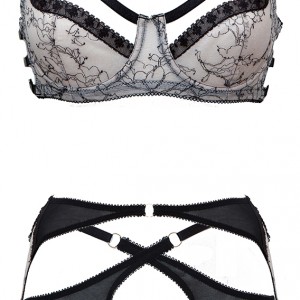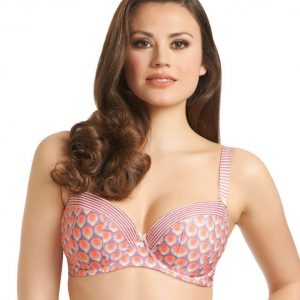Why Don't Lingerie Brands . . . Just Do Custom Alterations?
We're (briefly?) resurrecting the "Why Do Lingerie Brands...?" feature...which is basically me asking Catherine Clavering of Kiss Me Deadly questions my readers ask me and then posting her responses here. One of the things I love most about Catherine is that she's willing to answer the questions most other lingerie professionals avoid. There is so much that goes on behind the scenes in intimate apparel; decisions that seem totally random to consumers can have actually well-founded reasons behind them.
One question that pops up a lot, especially for lingerie brands that offer a finite range of sizes is, "Why can't all brands offer custom alterations?" While certain lingerie companies are famous for customizing most any bra (the Polish manufacturers Ewa Michalak and Comexim immediately come to mind), this isn't an option for all designers. Catherine explains why in her inimitable way below. By the way, if you dig this feature/want to see it come back, please let me know in the comments!
When Cora messaged me with this question, she did so with an expression I can only interpret as "mischievous glee" since a) I'm fairly certain she knows the answer and just how irritable I get about it and b) apparently, and inexplicably, more people read me being irritable than me being polite.
Anyway, once I finished screaming gently into the nearest cushion with sheer pent-up exasperation (my downstairs neighbour has made a noise complaint), I sat down to try and say what's going on from the perspective of someone who gets lingerie made.
From Handmade to Mass Production
Decades, centuries ago, everything you bought was proportionately much more expensive. Cars were for the very rich only. Clothes got mended and passed on because they were a serious financial investment. Hell, in the UK, clothes even got rationed during World War II. They're resource-intensive, and we couldn't get the fabric.
As with cars, we've gone from an era where the product you use was lovingly handcrafted by one person or a small team, to production lines, where each person has one job that's very short. Serious clothing production lines try to break things down into 30 second "operations" that they do over and over again. It's pretty clear that this isn't especially great for the mental health of the workers involved, but it's absolutely genius at reducing the cost of each individual item and using resources effectively.
But it also has two other consequences that are relevant here.
Consequence the First
Firstly, it means that there are far more companies and brands than there are manufacturers. There are hundreds of lingerie brands in the UK, but I can probably count the number of factories on my fingers.
This is more true for lingerie than most things, because it requires specialist machinery and skills. Underwired bras in particular are basically the stuff of investor nightmares.
So it follows that most brands can't just chuck a bra over to a sewing person and say "Hey, could you make this back a bit smaller/add a bit to this cup/ widen this gore?" because the factory will rightly say, "Not unless you are ordering at least 12 per size, per style of them, and give us however many weeks notice so we can allocate some staff to your work, thanks very much."
Now they could set up a small production unit just to handle individual alterations, but that would mean duplicating all the machinery and skills the factory has and locating them somewhere...which means rent and taxes and wages and insurance.
Inevitably, that location won't be where it is convenient for retail customers because what you need for 4 industrial sewing machines and the fabrics, widgets, and thread to go with them is not, in fact, suitable for inside a lingerie shop.
Consequence the Second
Even if a lingerie brand or store invests in its own small unit for alterations or custom making, they would run straight into the second consequence of mass manufacturing, which is price expectations.
The price people are prepared to pay is dictated by expectations on what has been available and the base price of an item. Someone buying a $30 bra is deeply unlikely to be prepared to pay another $30 to get the straps and back changed and the cup pinched in to fit them perfectly. But when you break down the cost of the equipment, premises, staff time and staff training level required, combined with doing it to just one bra at a time, it can end up costing that.
Again, this is especially true because lingerie is different from clothes. My favourite designer can put darts in the back of most of his dresses and tops to make them fit me when I lose weight and let it out when I gain weight, using one machine, that, at a pinch, can be a domestic one. I recently tried to change the lace on one of our bra samples, and it was impossible. I needed two industrial sewing machines to take the entire cup apart and then redo it - at which point, because it was delicate fabrics, it probably would have fallen apart from the repeated perforations. We ended up sewing the new lace over the old lace and faking it!
Custom fitted lingerie is a really difficult and complicated area. If you're ever pondering on this, just remember how much couture garments cost - the ones where you say "I like this design, but without that bit" and they make it to measure you perfectly. For structured lingerie, while it's not quite that level of skill, there are similarities. You need a skilled worker, lots of time, expensive equipment, and you might end up making the garment from scratch anyway.
And that is why very few places do this. Let's talk again when we can 3D print bra cups. Then it'll get exciting!








